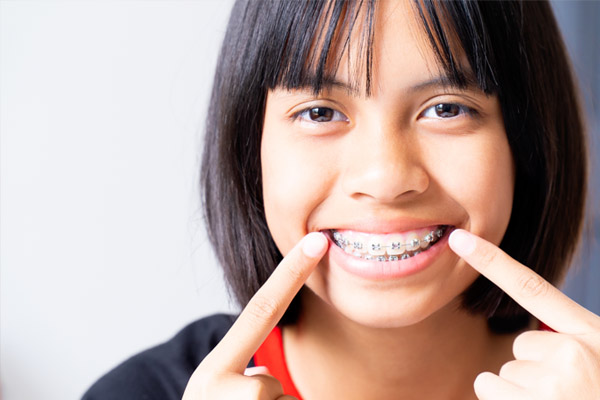How Restorative Dentistry Can Fix Your Damaged or Missing Teeth

Restorative dentistry is an unofficial specialty field that focuses on restoration of the mouth and treatment of damaged tooth issues. Usually, this means repairing broken teeth and replacing missing teeth to restore structure and bite use. The priority of dental restoration is preserving and saving the natural tooth at all costs before resorting to extracting it. The goal is bringing back the natural smile and preventing future injury and bacterial attack to the tooth.
Restorative dentistry procedures
Fillings
Despite a meticulous daily oral hygiene routine, cavities can still appear. Be it due to neglecting a specific area or because of hereditarily deeper grooves in teeth that make them harder to clean, there are many reasons why a cavity can arise. No matter the reason, restorative dentistry can help. A cavity is tooth decay that has formed a small hole in the enamel. Unchecked plaque eats away at the outermost layer of the tooth and causes irreversible destruction. Filling a cavity is one of the most common restorative dentistry procedures. To restore this kind of damage, the dentist will remove plaque with a dental drill, then sterilize the area before filling with a composite material to discourage bacterial advancement.
Crowns
The enamel of some teeth is sometimes beyond saving. Dentists use crowns when the tooth is no longer stable on its own. A crown is a tooth-shaped cap usually made of porcelain or stainless steel coated in a thin layer of porcelain. The cap is cemented over a prepared tooth. To prepare the tooth, the dentist will first reshape it so the crown can fit over it. Since the crown is made from antimicrobial materials, the idea is that the tooth is then protected against future tooth decay. Crowns are mainly used when a patient has a deep cavity or damaged tooth.
Dental implants
Implants are an excellent way to replace missing teeth. When even one tooth is missing, changes can start to happen in your mouth. Teeth begin to shift toward the gap in order to fill the space. The jaw begins to lose bone density below the missing tooth, which can start to affect surrounding teeth. The tooth opposite the space will begin to loosen, as there is no crossbite to keep it functioning properly. Getting a tooth replaced as soon as possible is important in maintaining oral health, and a dental implant is the most permanent option in achieving a life filled with optimal bite functionality. First, the titanium implant post is inserted into the jawbone. After a few months, the post has fused to the bone and a crown is placed. A dental implant can last a lifetime with proper care.
Bridges
A dental bridge is a device that attaches to existing teeth while filling a gap in the middle. An artificial tooth connected between two crowns is placed over prepared teeth. Bridges keep teeth from moving out of place and can work just like natural teeth. Dental implants can be used in combination with bridges if there are multiple teeth missing right next to each other.
Dentures
A removable appliance used when missing all teeth, dentures are the most cost-effective option for restoring the smile. Dentures should be cleaned at least once per day with dish soap and a toothbrush and should be taken out for at least five hours each day to let the jaw rest. To take care of your restorative dentistry work, be sure to brush your teeth like you normally would, twice per day. Do not chew on hard or sticky foods, and always clean devices as if they are your natural teeth. Damaged teeth can benefit from one of the many restorative dentistry treatments out there. Make an appointment to review your options today.
Request an appointment here: https://brimhalldentalgroup.com or call Brimhall Dental Group at (661) 249-1122 for an appointment in our Bakersfield office.
Check out what others are saying about our services on Yelp: Read our Yelp reviews.
Recent Posts
There are various options for straightening teeth. Invisalign® for teens is a popular option for this age group, as it is less obvious than traditional metal braces. Invisalign consists of clear trays that fit over the top and bottom rows of teeth. This straightening method has many benefits. However, not everyone is a good candidate.…
It is easy to understand why Invisalign® for teens is such a popular teeth-straightening treatment. It removes the need for traditional braces that can be cumbersome, conspicuous, and sometimes painful. Parents and teens alike should find out all they can about Invisalign® treatment before making the decision to proceed.If you are not sure what to…
Most people have experienced seeing red on the bristles of their toothbrush, or a pink tint in the sink when they expectorate after brushing. It is normal to feel a bit of concern when noticing blood in the mouth because bleeding gums are a symptom commonly associated with gum disease. However, while chronic bleeding gums…
If your son or daughter is concerned about crooked teeth or a bad bite, you may want to consider Invisalign® for teens. This is an alternative to metal or ceramic braces, and it has numerous benefits, especially for those who are self-conscious about how they look. There are various reasons why Invisalign may be the…


